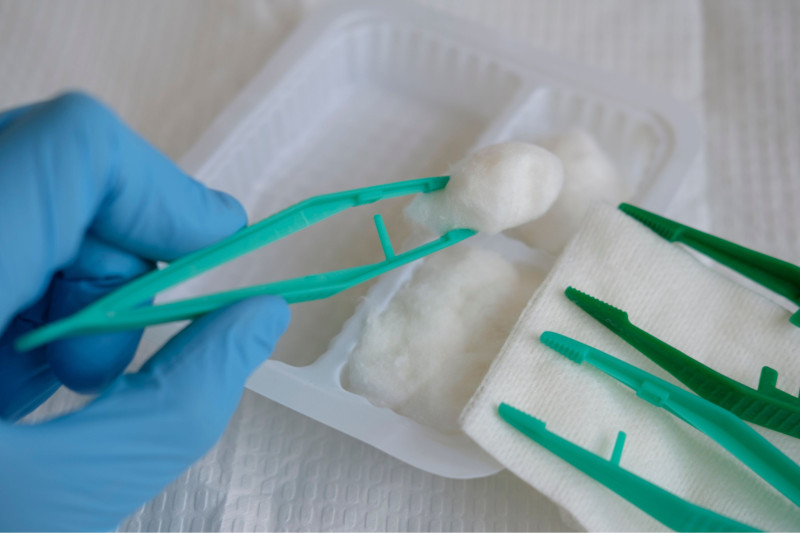20 August 2024 |
Dealing with the Mounting Pressure of Lower Limb Wounds in the UK

Lower limb wounds, including leg and foot ulcers, are becoming an increasingly serious issue in the UK, affecting a large number of people. These wounds often result from chronic conditions like diabetes, venous insufficiency, and peripheral arterial disease, which can greatly diminish a person's quality of life and create ongoing healthcare challenges. Managing these wounds effectively requires a comprehensive strategy that focuses on prevention, early diagnosis, and consistent, evidence-based treatment.
The National Wound Care Strategy Programme (NWCSP) highlights that around 2% of the UK population suffers from chronic wounds, with lower limb wounds making up a significant portion of these cases. The growing number of diabetes cases and an ageing population are major factors behind this increase. These wounds not only cause pain and disability but also place a substantial financial strain on the NHS, costing an estimated £4.5 to £5.1 billion each year on wound care alone. This underlines the urgent need for better management strategies.
One of the biggest hurdles in treating lower limb wounds is the inconsistency in care practices across different healthcare settings. Despite advances in wound care technology and treatment options, there are still significant variations in practice that can lead to less than optimal outcomes. As noted in the Journal of Vascular Societies report by Adderley, these discrepancies can result in delayed healing, a higher risk of infection, and increased complications, including amputations. Additionally, healthcare professionals often struggle with accurately diagnosing the underlying causes of these wounds, which can lead to ineffective treatments that don’t address the root issues.
To tackle these challenges, the NWCSP has developed a set of recommendations aimed at standardising the care of lower limb wounds. Key aspects of these guidelines include early diagnosis and intervention, the proper use of dressings and compression therapy, and regular monitoring to ensure that treatment is adjusted as needed. By implementing these guidelines, the goal is to reduce variability in care and improve healing rates across the UK.
The NWCSP's progress report highlights several important achievements, such as the development of a national wound care framework and the launch of pilot sites to test and refine these recommendations. These initiatives are intended to ensure that healthcare providers have access to the latest evidence-based practices and are well-equipped to deliver high-quality care to patients with lower limb wounds.
Preventative measures are crucial in reducing the occurrence of these wounds. The NHS has issued guidelines emphasising the importance of regular foot checks for people with diabetes and those at risk of venous insufficiency. Educating patients about proper foot care and the importance of maintaining good circulation can help prevent these wounds from developing in the first place.
Furthermore, early intervention is key to avoiding complications. Quick diagnosis and treatment can lead to significantly better outcomes, lowering the risk of infections and reducing the likelihood of amputations. Healthcare professionals are encouraged to take a proactive approach, using the latest diagnostic tools and treatment protocols to manage lower limb wounds effectively.
To learn more about this, join us for The Third National Wound Care and Management Conference and Exhibition 2024 which will explore the future of wound care in the UK, strategies for improving patient experience and recovery, and best practice examples of excellence in wound care prevention and management.
Events

The Future of Surgery Show 2026
20 January 2026

Advancing Inclusivity in the Workplace Conference 2026
28 January 2026

AI in Government 2026
29 January 2026

The Annual Information Management and Digital Construction Conference 2026
3 February 2026

The Future of Construction 2026: Building Smarter, Faster, Greener
3 February 2026
Courses

Effective Leadership Through Emotional Intelligence - CMI Level 7 Award
15 December 2025
3 spaces available
AI for Leaders and Managers
16 December 2025
Sold Out

Effective Leadership Through Emotional Intelligence - CMI Level 7 Award
20 January 2026
5 spaces available

Strategic Approaches to Wellbeing and Resilience Programme - CMI Level 7
3 February 2026
3 spaces available

The Aspiring Leaders Programme
10 February 2026
Sold Out